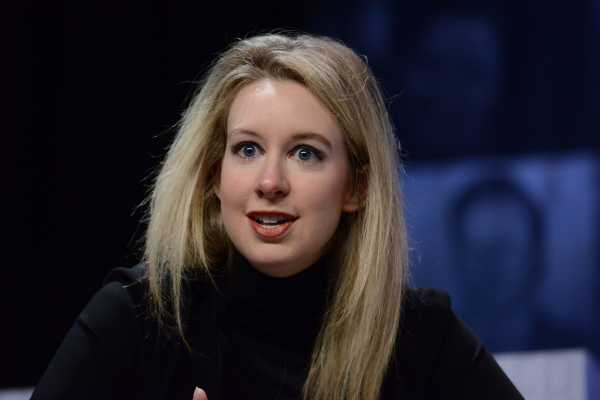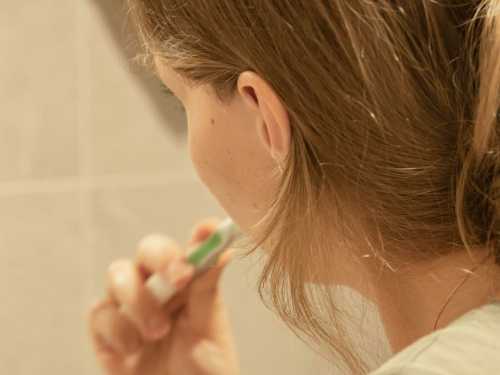
Elizabeth Holmes once promised to revolutionize the multibillion-dollar blood testing industry with innovative finger-prick tests she said would deliver results quickly, painlessly, and cheaply.
Now the 34-year-old founder of the biotech startup Theranos is in huge legal trouble. On Wednesday, the Securities and Exchange Commission charged her with defrauding investors and stripped her of control of the company she founded.
According to a statement from the commission, the former CEO, along with ex-Theranos president Ramesh “Sunny” Balwani, was charged with raising more than $700 million from investors “through an elaborate, years-long fraud in which they exaggerated or made false statements about the company’s technology, business, and financial performance.”
The false claims outlined by the SEC are stunning. Among them: Holmes and Balwani told investors that the US Department of Defense was using Theranos’s products on the battlefield in Afghanistan and on medevac helicopters, bringing in more than $100 million in revenue in 2014. “In truth, Theranos’ technology was never deployed by the U.S. Department of Defense and generated a little more than $100,000 in revenue from operations in 2014,” the SEC said. It also said Holmes and Balwani promoted a key blood-testing product using unfounded claims.
Theranos and Holmes are neither admitting nor denying the SEC’s allegations. To settle the charges, Holmes has agreed to pay a $500,000 penalty, give up majority voting control over the company, and be barred from serving as an officer in a public company for a decade. The SEC’s case against Balwani, who did not settle, is pending in a California federal court.
This is just the latest chapter in Holmes’s crumbling narrative. Once a self-made billionaire, Forbes recently estimated her net worth had sunk to zero. Today, her story can be read as a cautionary tale about hype in Silicon Valley.
Theranos claimed to offer faster, cheaper, painless blood tests
Many of the charges the SEC outlined today first came to light in a Wall Street Journal investigation published in October 2015. In it, reporter John Carreyrou showed that the company’s claims of a health care revolution were overblown. Contrary to Holmes’s public statements, Theranos had allegedly been collecting blood samples using traditional methods and then diluting them so they could be run on machines made by other companies — not their much-hyped Edison technology (more on that below).
What’s more, the Journal’s investigation, as well as a follow-up story, suggested there were major concerns about the accuracy of Theranos’s test results.
Theranos had claimed it had the technology to take blood from a simple, painless prick and run multiple tests on that raindrop-size sample rather than the multiple vials usually required. The sample would be sent to a lab in a “nanotainer” and tested on Theranos’s proprietary technology, known as Edison machines.
Theranos also promised to deliver results in a few hours, to eliminate anxiety-inducing waits. Holmes said the tests would cost about half of current Medicare and Medicaid reimbursement rates for tests.
It seemed promising. In 2013, Theranos opened 42 “wellness centers” in Walgreens pharmacies in Arizona, two in California, and one in Pennsylvania. Holmes had also started lobbying state governments to allow patients to order Theranos tests without having to go through the cumbersome process of getting a doctor’s note — a step that, in theory, would further cut down on time and cost to patients.
By 2015, Holmes had persuaded Arizona’s legislature to pass a law allowing patients to go right to her labs and order up whatever menu of testing they wanted, without doctors’ approval.
So not only was Holmes trying to upend the way blood testing is done, she was also trying to change how people interact with the health care system. Considering that every person gets blood tests at some point, the changes she promised were a big deal.
Many of Theranos’s claims were never validated, raising suspicions
Even before the Journal investigation, critics had begun asking for proof that Theranos’s technology actually worked and that its results were accurate. After all, the evidence on this wasn’t public: The Food and Drug Administration hadn’t cleared Theranos’s tests. And Holmes had never published her claims in peer-reviewed journals.
Holmes and Theranos’s PR team deflected these critics by citing intellectual property concerns and suggesting that any complaints were being planted by rival testing companies such as Quest and Laboratory Corporation. Here’s how Ken Auletta of the New Yorker described Holmes’s stonewalling:
Then in October 2015 came the massive Wall Street Journal investigation. Carreyrou eventually discovered and reported that it appeared Theranos rarely even used its much-hyped Edison technology in its tests. Instead, the startup allegedly relied mostly on older technology by companies like Siemens for the bulk of its testing. (This was in contrast to the company’s claims that it used older machines only for “certain esoteric and less commonly ordered tests.”)
Carreyrou raised real concerns that the company’s signature Edison machines — the ones that had garnered all the hype — weren’t nearly as accurate as claimed. On this point, Carreyrou cited former employees, internal emails, and doctors. One Theranos employee even complained to regulators that Theranos had been gaming the system, “failing to report test results that raised questions about the precision of the Edison system.”
After the Journal’s story, more critics came forward and claimed that their blood test results from Theranos didn’t quite match those from standard labs. In a follow-up, the Wall Street Journal confirmed that the FDA had pressured Theranos to stop using its Edison technology on almost all of its blood tests save for one (a test for Type 1 herpes simplex) because of concerns about the machines’ accuracy.
So how did Theranos get so much hype with such weak claims?
There’s no shortage of Silicon Valley companies that claim to be changing the world, but Theranos stood out for a few reasons: It had an amazing origin story, it was led by a young woman in a mostly male tech industry, and it promised to solve a problem that was relevant to most people.
Holmes, the company’s founder, dropped out of Stanford as a sophomore in 2004. She said she’d started the company to address her phobia of needles — one that she realized many people shared — and out of the desire to help people diagnose potential diseases faster and at more accessible prices. Her message that billion-dollar lab companies were ripping people off with costly, outdated, and unnecessarily painful technology resonated deeply.
Over the next decade, Holmes managed not only to get her own Stanford professor and mentor on board but also to attract $400 million from venture capitalists and assemble a star-studded board that included former US Secretaries of State Henry Kissinger and George P. Shultz.
In this context, it’s not surprising that favorable press followed: Holmes could be found, always in Steve Jobs–esque black, on the cover of Forbes and Fortune, and was even the subject of an in-depth New Yorker profile. She was named “the world’s youngest self-made female billionaire” by Forbes and ”America’s coolest billionaire” by Inc. magazine, and even made Time magazine’s list of the “100 most influential people.”
This whole episode should be a cautionary tale: If a secretive tech company is claiming to revolutionize an entire industry with technology that still hasn’t been validated, be skeptical.
Sourse: vox.com






